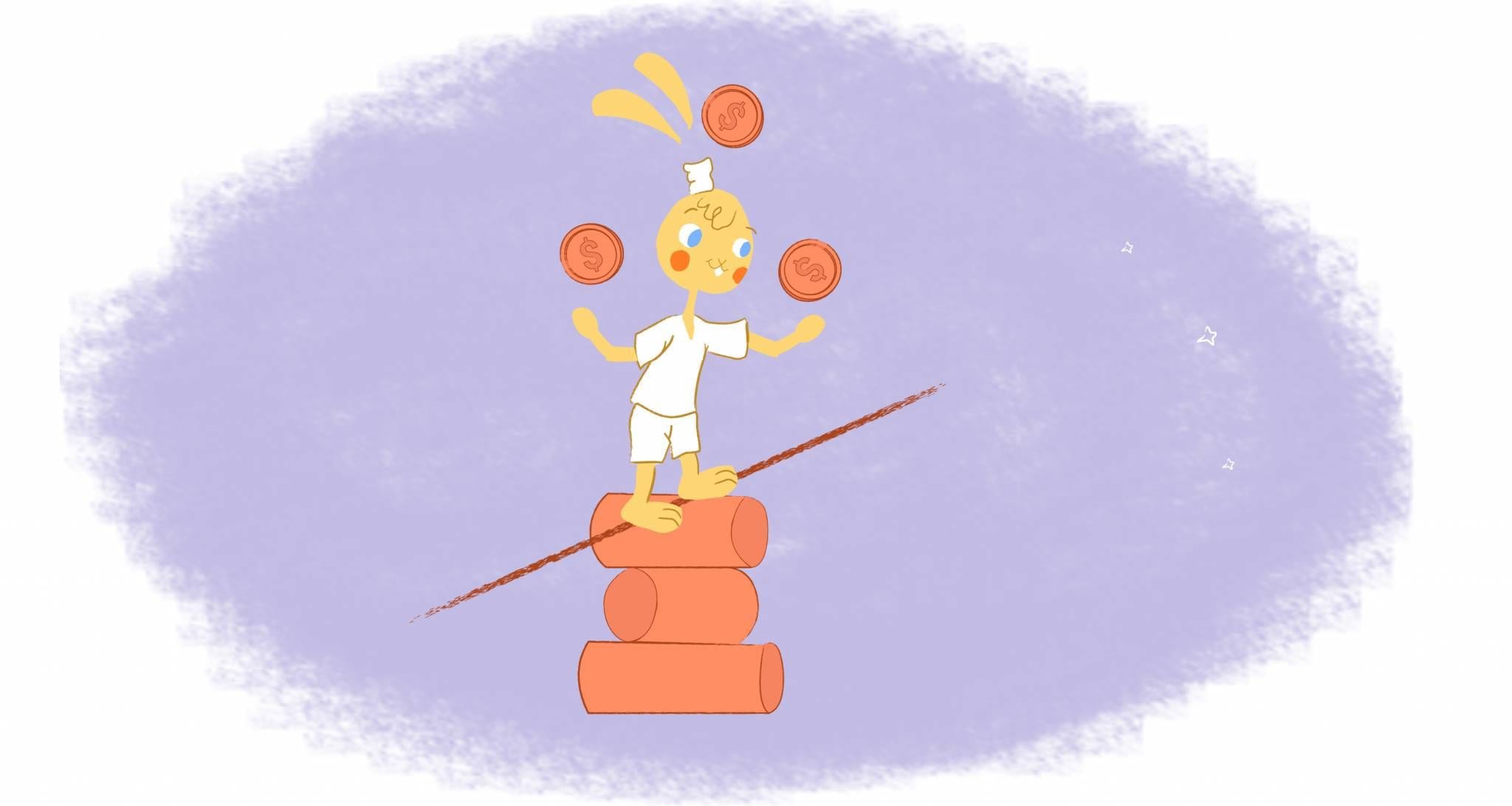

Each of us has the same 24 hours in a day. Yet, some individuals seem to achieve superhuman feats within those hours. In contrast, others find it difficult to stay afloat.
Their secret weapon? Energy management.
By managing your energy throughout the day, you can optimize your physical, mental, and emotional well-being. With a better understanding of your natural energy rhythms and a strategic alignment of your activities, you can get more done with less stress and burnout.
So, let’s ditch the relentless hustle and optimize our energy for peak performance instead.
The Limitations of Time Management
Time management strategies such as to-do lists and time-blocking have merits. They promote discipline and create a sense of control. However, they often overlook an important factor—our fluctuating energy levels.
What’s more, a rigid time schedule can hinder productivity when it comes to cramming demanding tasks into limited slots of time. As a result, trying to force yourself to work when you are fatigued will only result in frustration.
Here are some reasons why time management isn’t effective:
- Our natural rhythms are ignored. The human body is not a machine designed to function consistently throughout the day. Instead, it is natural for our energy levels to fluctuate.
- Stress and burnout result from it. In the long run, overextending oneself leads to exhaustion and decreased motivation.
- Rather than focusing on quality, it emphasizes quantity. It doesn’t guarantee high-quality work to rush through tasks just to check them off a list.
The Science of Energy: Understanding Your Body’s Clock
A natural cycle known as the circadian rhythm governs the functioning of our bodies. It regulates our sleep-wake patterns, hormone fluctuations, and overall energy levels.
The high points.
- Morning. The body’s wakefulness hormone, cortisol, peaks in the morning. Therefore, this is the best time to tackle demanding tasks that require concentration and focus.
- Mid-morning. Despite a slight dip in energy following the initial surge in cortisol, energy levels remain relatively high. For problem-solving and analytical tasks, this is the perfect time.
- Late afternoon. During this time, you naturally feel less energetic, leading to sleepiness or a decreased level of alertness. This might be a good time for meetings or brainstorming sessions requiring less concentration.
When these natural rhythms are ignored, productivity is diminished. When you force yourself to work through a slump, you can create frustration and errors and ultimately waste time. Energy management acknowledges these cycles by working with our bodies rather than against them.
The Core Principles of Energy Management
Generally, effective energy management consists of four main principles:
- Self-awareness. The first step is to understand your own energy patterns. Are you a morning lark or a night owl? What time of day do you feel most focused and engaged? How often do you experience slumps? You can gain valuable insights if you record your energy levels throughout the day for a week.
- Planning. When you know your energy peaks and dips, schedule tasks that require the most effort during those times. Treat these times as important meetings by blocking them out on your calendar. Put off less demanding tasks, such as answering emails or organizing files, until your natural dips.
- Prioritization. All tasks are not created equal. Identify the most important and urgent tasks and prioritize them accordingly. High-priority tasks can be completed during peak energy times, while less crucial items can be put on hold.
- Strategic breaks. For optimal performance, rest isn’t a reward; it’s a necessity. Even when you feel productive, schedule short breaks throughout the day. Do some simple stretches, get fresh air, or walk. By taking these mini-recharges, you can prevent burnout and maintain your energy levels.
Strategies for Optimizing Energy: From Sleep Hygiene to Mindful Breaks
The following strategies can help you maximize your productivity and manage your energy:
Understanding your energy patterns.
Again, the first step is self-awareness. Throughout the day, keep an eye on your energy levels. Is there a time when you are most alert and focused? When do you feel a dip? What activities drain you, and what activities energize you?
You can track your energy in several ways:
- Create an energy log. Rate your energy level on a scale of 1-10 throughout the day.
- Pay attention to physical cues. Are you constantly yawning? Can’t seem to concentrate? It is possible that these are signs of fatigue.
- Identify your “peak hours.” Make sure you schedule your challenging tasks when you are most energized.
Keeping your energy up throughout the day.
You can maximize your productivity by aligning your activities with your body’s natural rhythms.
- When you are most focused, take on demanding tasks in the morning or mid-morning.
- Reduce the complexity of a project by breaking it down into smaller, more manageable steps.
- Later in the day, when your mind might be a bit more relaxed, consider scheduling creative brainstorming sessions.
- Don’t forget to listen to your body. If you feel drained, take a short break or engage in a low-intensity activity to recharge yourself.
Work in batches on similar tasks.
Bouncing between tasks leads to context switching. For those unaware, frequent context-switching can decrease productivity and increase mental fatigue. Each time you switch tasks, your brain needs to readjust and refocus, which can be mentally draining and disrupt your flow of work.
However, by batching similar tasks together, you create a more efficient workflow and reduce the cognitive load required to switch between different types of tasks.
Engage in energizing activities.
Regularly scheduled activities that replenish your energy throughout the day. For example, to counter your afternoon slump, take a short walk. Additionally, stretching exercises, listening to uplifting music, practicing deep breathing techniques, and interacting with friends can be included in your schedule as energizing activities.
This may seem insignificant. However, these small breaks can greatly impact your focus and overall well-being.
Fueling your energy sources.
For overall well-being, it is necessary to combine a variety of physical, emotional, mental, and spiritual energy sources. In the same way that a car needs the right fuel to run efficiently, our bodies and minds need nutrition, exercise, self-care, and spiritual practices to function well.
Physical:
- Prioritize sleep. Ideally, you should sleep for 7-8 hours a night.
- Move your body. Your energy can be zapped by sitting for an extended period of time. Make sure to schedule short breaks throughout the day for movement. To improve blood flow and increase focus, take a brisk walk, do some light stretching, or try some simple desk exercises.
- Choose your fuel wisely. Your energy levels are significantly affected by what you eat. It is important to eat nutritious foods throughout the day so that you can maintain your energy level. You should eat fruits, vegetables, whole grains, and lean proteins. It is also best to avoid sugary snacks and processed foods that can cause energy crashes.
- Keep hydrated. Fatigue, headaches, and poor cognitive function can result from dehydration. Keep your body hydrated by drinking plenty of water throughout the day. Adding water-rich fruits and vegetables to your diet is also a great idea.
Emotional:
- Practice mindfulness. You caN manage stress and maintain emotional balance by practicing techniques such as meditation or deep breathing.
- Avoid toxicity. To protect your energy and avoid emotionally draining situations and individuals.
Mental:
- Reduce the noise. Spend a few minutes on your lunch break or connecting with your inner needs and desires early in the morning. What does your body tell you? When there is too much internal noise, we become ineffective. To reduce the noise, we need to disconnect from time to time.
- Take breaks and shift your mental effort. Resting and recharging the brain replenishes mental energy reserves. Changes in tasks or scenery can greatly affect our thinking and energy, as we have natural energy cycles.
- Journal. Have you ever been entangled in your thoughts and complex decisions? Writing in a journal allows you to slow down your thoughts and express them on paper or digitally.
- Practicing gratitude. By giving thanks or expressing gratitude, we release dopamine, the brain’s own “feel-good” chemical. In addition to boosting our energy and turning on our brain’s learning centers, dopamine makes us feel more motivated and satisfied.
Spiritual:
- Invest time and energy in activities that have meaning and purpose for your life. An example of meaningful activities that align with your values is volunteering for a cause you are passionate about. In addition, you can take part in activities that will enhance your self-development and growth, such as reading, learning new skills, and practicing mindfulness.
- Connect with loved ones. Emotional support from family and friends reduces stress and helps with positivity. Therefore, surrounding oneself with optimistic and supportive people can boost a person’s mood, increase resilience, and boost mental energy levels. Additionally, the brain is stimulated and kept energized by engaging with others.
Set up your ideal workplace.
Energy levels can be affected significantly by your physical environment. As such, keep the following in mind regarding your work environment.
- Natural light. In addition to helping regulate your circadian rhythm, sunlight boosts your mood and concentration.
- Organize your workspace. If your workspace is cluttered, you will be distracted, and your energy will be drained. For optimal productivity, keep an organized and clean environment.
- Reduce distractions. The constant bombardment of notifications and multitasking drains your mental energy. When working focused periods, turn off notifications for non-urgent messages, silence your phone during those periods, and block specific times for tasks you need to accomplish.
Keeping your energy levels up with boundaries.
Boundaries aren’t selfish; they’re necessary. Healthy boundaries protect your energy and allow you to focus on what really matters. To do so, follow these steps:
- Learn to say no. Don’t overload yourself with too much work. When your priorities or energy level do not align with a task or commitment, politely decline it.
- Schedule “off-time.” Keep a clear line between your work and personal time. For instance, outside of working hours, disconnect from work emails and notifications.
- Communicate your needs. Be clear about your working hours and expectations with colleagues, family, and friends. In this way, you are able to manage their expectations and ensure that you have time to recharge.
Creating sustainable productivity.
A journey is more important than a destination when it comes to energy management. This means working in harmony with the natural rhythms of your energy. For long-term success, here are some additional tips:
- Be flexible. We all have to deal with curveballs in life. Therefore, learn to delegate or reschedule tasks accordingly.
- Embrace imperfection. It is exhausting to try to optimize every minute. Don’t worry about perfection–just focus on progress. Don’t forget that sometimes good is enough.
- Listen to your body. Make sure you don’t burn yourself out. Sometimes, the best thing you can do is rest and recharge when you’re truly depleted.
Conclusion
By shifting your focus from time to energy, you empower yourself to work in accordance with your natural pattern rather than against it. To reach peak productivity, prioritize your well-being and work in harmony with your energy levels.
FAQs
What’s the difference between time management and energy management?
An important aspect of time management is making the most of the 24 hours you have daily. It involves methods such as prioritizing, scheduling, and minimizing distractions.
Energy management, on the other hand, focuses on understanding and optimizing your energy levels throughout the day. In addition to physical energy, mental and emotional energy must also be considered.
In short, while time management is important, you can’t be productive without energy.
So, energy management isn’t just about physical stamina?
Exactly!
In addition to physical energy, it considers your mental and emotional well-being. Just as being physically tired can derail your focus, being stressed or overwhelmed can do the same. Energy management helps you identify and address these factors to maximize your productivity.
Why is energy management important for productivity?
Time management is important for getting things done, but energy management is crucial for being productive. The following reasons explain why:
- Focus and attention. Our energy level directly affects our ability to concentrate and focus. During times of fatigue or sluggishness, our minds wander, making staying focused difficult. You can manage your energy to ensure you’re tackling demanding projects during your peak hours.
- Quality over quantity. Working long hours won’t improve your work quality, even if you force yourself to do so. By managing your energy, you can prioritize tasks and devote your energy to the most important ones.
- Reduced stress and improved well-being. Burnout occurs when you are continuously exhausted and push yourself beyond your limits. In order to maintain sustained productivity, energy management incorporates breaks, healthy habits, and recognizing your limits to prevent burnout.
By managing your energy effectively, you can work smarter, not harder. With the right workload and energy levels, you can accomplish more with less time and effort wasted.
How can I track my energy levels?
Observe your body’s natural rhythms. When are you most alert and focused? Do you ever experience a slump? Keeping a simple log noting your energy levels throughout the day can be helpful.
Okay, I know my energy patterns. Now what?
Put demanding tasks on your to-do list during your peak energy period. During low-energy periods, less demanding activities can fill the void. It is also important to take breaks to recharge! Taking a short walk, meditating, or even getting up and moving around can rejuvenate your mind and boost your energy level.
Are there any tools or techniques that can help?
Actually, there is a lot!
As an example, the Pomodoro Technique involves working in focused 25-minute intervals with short breaks in between. Additionally, there are apps that can track your energy levels and suggest activities to optimize your day.
When you understand and manage your energy, you can achieve peak performance. This is the key to unlocking true productivity.
Image Credit: Krivec Ales; Pexels











John Rampton
John’s goal in life is to make people’s lives much more productive. Upping productivity allows us to spend more time doing the things we enjoy most. John was recently recognized by Entrepreneur Magazine as being one of the top marketers in the World. John is co-founder and CEO of Calendar.